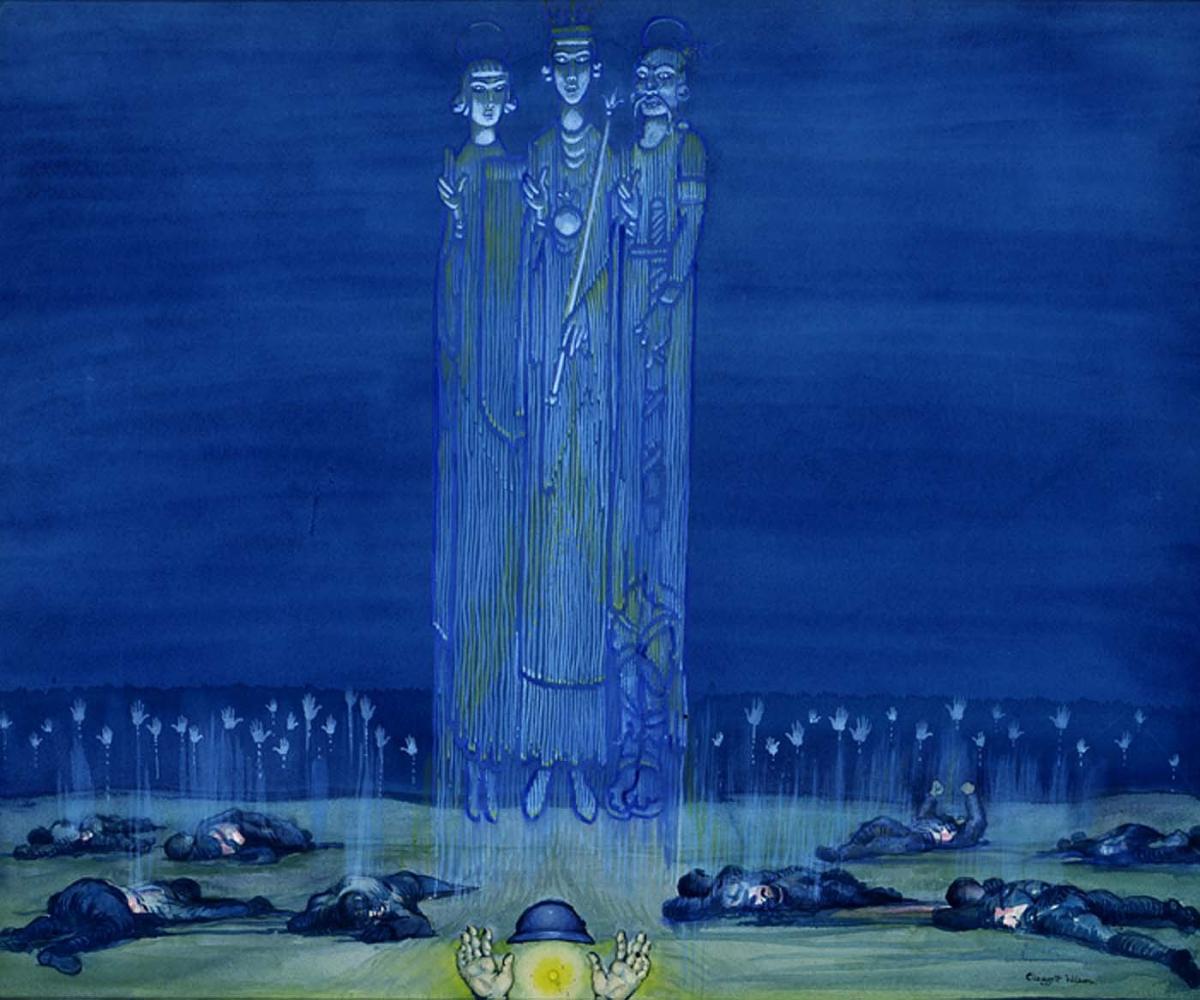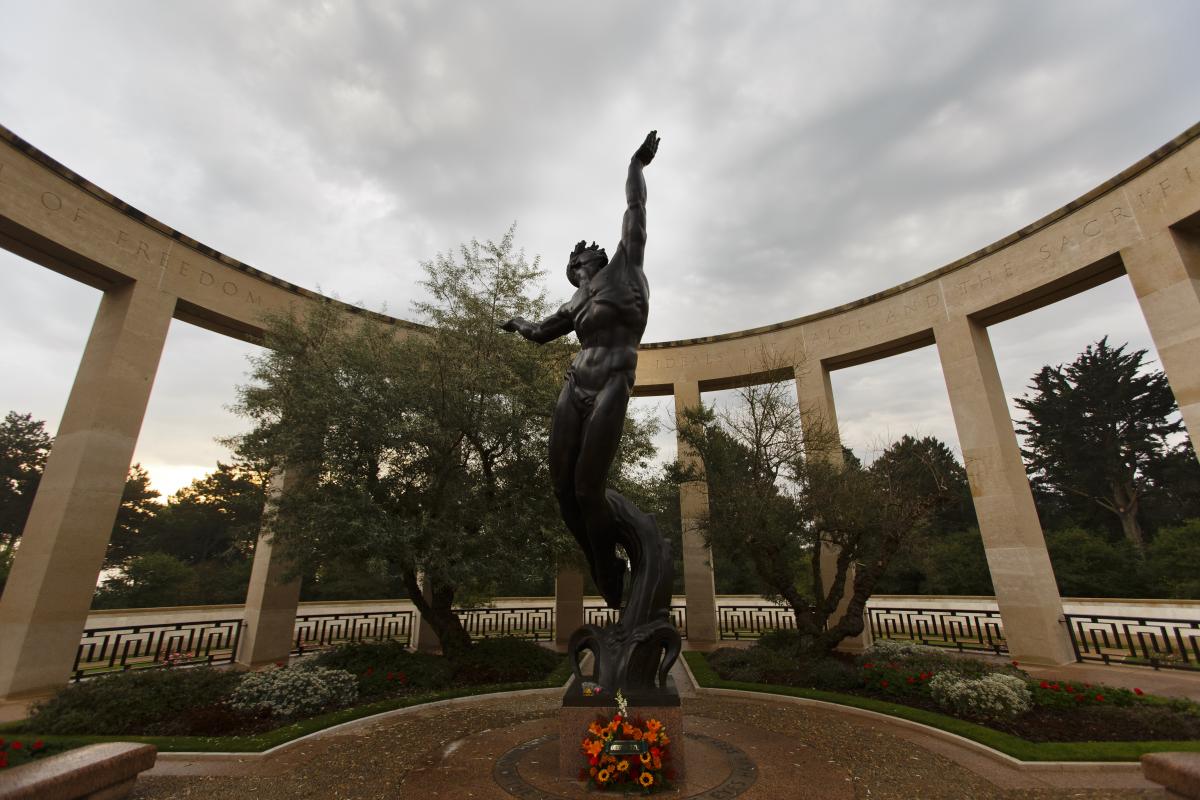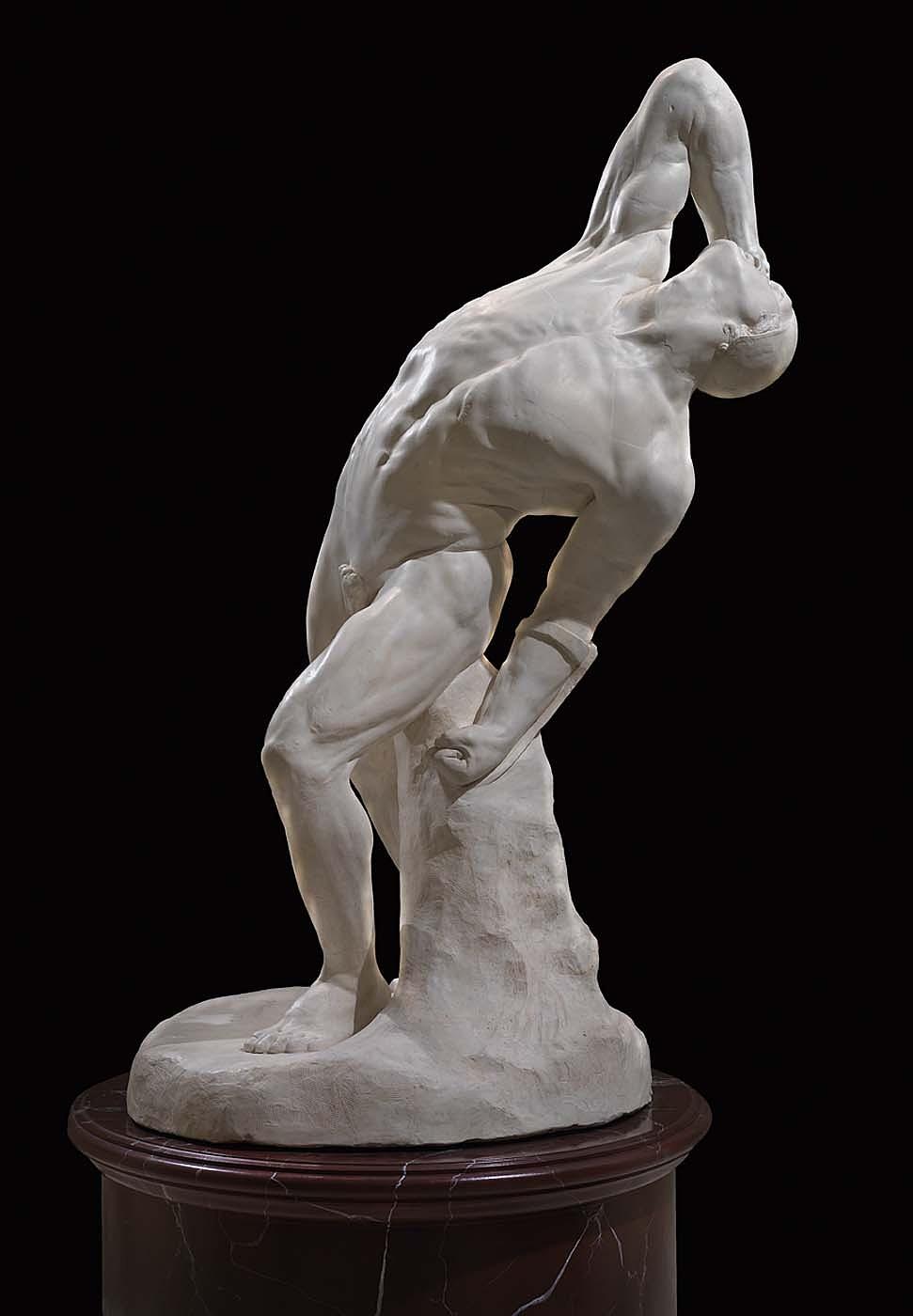SAAM recently established a partnership with the American Battle Monuments Commission (ABMC) to develop a series of online education programs for adult learners. This series offers the unique opportunity to explore SAAM’s collection in new ways and draw unexpected connections between two seemingly disparate topics: American art and U.S. military cemeteries.
Recently we sat down with ABMC historian Benjamin Brands to discuss how American art is an integral component in commemorating the honor, service, and sacrifice of America’s fallen in battles abroad.
1) Ben, thanks so much for joining us. Can you tell us about your role as a historian for the American Battle Monuments Commission?
The American Battle Monuments Commission is an agency that is rich in history – it was founded in 1923 to design, construct, and administer overseas cemeteries and monuments honoring American involvement in World War I. The Historical Section was established shortly thereafter to record the history of American participation in the war. This resulted in the 1927 publication of A Guide to American Battlefields in Europe (primarily written by a young Army Major, Dwight D. Eisenhower) and the expanded 1938 volume American Armies and Battlefields in Europe. ABMC’s stewardship later extended to include World War II cemeteries, as well as other cemeteries and monuments to American service members as directed by Congress.
Today we have 26 cemeteries and 32 memorials around the world and ensure that the history of our sites and the fallen that we commemorate are honored.
Another part of my role is overseeing our Education Program, which includes programs like our collaboration with SAAM. We also continue to produce new publications that help ABMC tell the story of American service members, such as our American Armies and Battlefields in Europe: World War II volume published last year.
2) In our jointly developed education series, we talk a lot about connections between U.S. military cemeteries and American art. How, through visual storytelling, are ABMC stewarded cemeteries designed and planned similarly to works of art that can be found in SAAM’s collection?
Art has always been central to how we honor American war dead. After World War II, President Eisenhower said that the ABMC memorials, including the cemeteries dedicated during his presidency, may well stand as “the greatest collaboration in the arts ever undertaken by this country.”
Each ABMC cemetery includes works of sculpture and other art that powerfully convey the accomplishments and sacrifices of American service members. Moreover, these cemeteries are uniquely American works of art. They are carefully designed so that each element, from the architecture to sculpture work to the battle maps to the horticulture to the grave plots themselves, reinforce each other. Together, ABMC provides an overarching tribute from our nation to its armed services.
This collaboration with SAAM allows us to discuss the uniquely American vision behind these cemeteries and memorials within the context of other American artworks in the museum’s collections.
For example, Claggett Wilson’s painting Saviors of France in SAAM’s collection includes imagery of the three saviors combined with the anonymous hands of common soldiers. This is reminiscent of how the broader symbols featured in the artwork of our cemeteries are juxtaposed with the rows of Latin Crosses and Stars of David, where soldiers of all backgrounds are forever honored.
3) Many ABMC stewarded cemeteries employ deep symbolism, allegory, and nuance to commemorate fallen service members. What are some examples of this?
The use of allegory and symbolism allows ABMC to convey meaning in a way that might be difficult to do otherwise.
For example, the statue Spirit of American Youth Rising from the Waves, at the Normandy American Cemetery, in France, uses classical imagery to depict both the power and sacrifice of the American soldiers who attacked Nazi-occupied Europe on D-Day. Instead of depicting a soldier or other service member charging the beach, the sculptor, Donald De Lue, has evoked classical figures. The sculpture gives a distinct feeling of upward movement, imparting it with multiple levels of meaning. From Americans rising from the waves to liberate Europe to the fallen ascending to heaven crowned by a laurel wreath, both interpretations are sacrificial and triumphant. This use of allegorical images also universalizes the message of our memorials and connects to this struggle. William Rimmer’s The Falling Gladiator from SAAM’s collection was made in the early days of the Civil War. It implies similar lines and classical imagery and, despite early criticism, was praised for its “representation of torment and suffering, relating it to the grim fate of Americans at war with one another.”
The use of classical imagery instead of motifs or contemporary features helps to ensure that viewers are not identifying either work with only a specific moment or only with a specific individual – instead, both works evoke larger themes of sacrifice and service.
4) Acknowledging the honor, service, and sacrifice of U.S. service members can manifest in a variety of different ways. What are some examples of these unique portrayals found among SAAM’s collection and ABMC sites?
The core mission of ABMC is to commemorate the honor, service, and sacrifice of our fallen, and the use of art is key to accomplishing this.
The art in SAAM’s collection often deals with these same themes but in very different ways. For example, Ehren Tool’s 204 of Thousands is a collection of hand-sculpted stoneware cups. These are distinguishable from the sculpture work in our cemeteries, and they are intended for a much different use. In the artist’s own words, they are meant to be used “hand to hand” and to “start a conversation.” Each cup is unique, and they use a wide variety of images related to military service and death. Yet, while Tool, a veteran himself, claims each element in his work is 'just a cup,' his artful transformation of an everyday object conveys a powerful message that transcends its simple nature.
Much like the triumphant nature of the art at our cemeteries, framed and defined by the sacrifice conveyed in the other surrounding cemeteries and memorials, Tool’s cups are given additional meaning when arranged together, a work of art made up of individual works of art, conveying both the individuality and universality of war.
5) What was one of the most interesting and maybe unexpected connections or discoveries that came to light through this partnership?
As a historian, most of my time is spent dealing with written records, so I think the most enjoyable element of this partnership was getting to explore our art in-depth and to think about how powerful art can be to convey the honor and sacrifice that is at the heart of our cemeteries and our mission as an agency.
While telling the story of these wars and the individuals buried in our cemeteries is incredibly important, this partnership has helped me gain a new appreciation for how art can reinforce the meaning of the sacrifice represented by the rows of headstones in each of our cemeteries.
This is the second in a two posts series about this partnership. A pilot series of life-long learning programs with SAAM educators and ABMC historians debuts this month and is fully subscribed. To learn more about SAAM’s education initiatives and resources, visit our website: AmericanArt.si.edu/education. Sign up for our email list and be the first to learn about new education programs at SAAM.






















